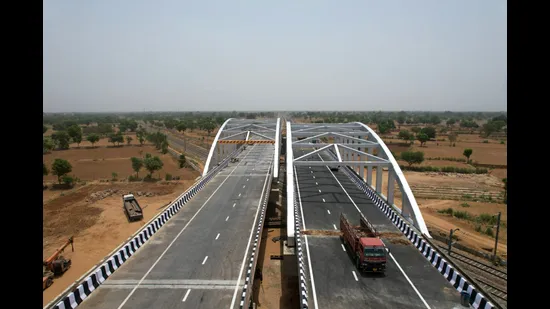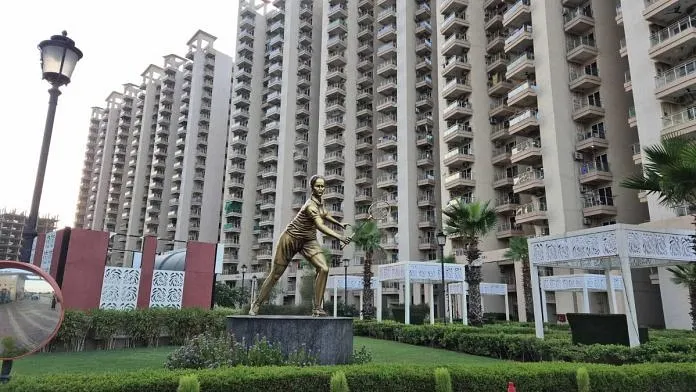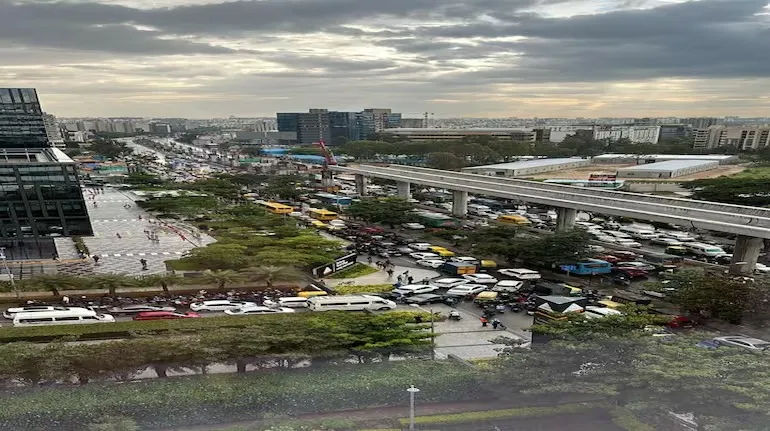 677 Page views
677 Page views
The Tribune Transit-Oriented Policy Haryana Transit- Oriented Development (TOD) Haryana Government Town & Country Planning Department(TCPD) Rapid Metro Network Rapid Metro Gurgaon Faridabad Northern Peripheral Road (NPR) Southern Peripheral Road (SPR) MG Road Golf Course Road Right-Of-Way (ROW) Ansal Housing Confederation Of Real Estate Developers' Associations Of India (CREDAI) Sohna Road Affordable Housing PPA (Persons Per Acre) Raheja Developers Commercial Office Dwarka Expressway

Transit-oriented policy can be a gamechanger for property market in Haryana
Vinod Behl
The newly notified Transit- Oriented Development (TOD) policy by Haryana, may well prove to be a catalyst to give the much-needed thrust to the real estate sector. First notified by the Haryana government in February, 2016 and later amended in November 2016 and April 2017, the latest draft of the progressive policy for development around transit mode areas, was cleared on February 15, 2018. It paves the way for the proposal of the Town & Country Planning Department to amend land category around proposed metro rail routes in the state.
In January this year, a NAREDCO delegation had met and requested Haryana Chief Minister, Manohar Lal Khattar to revise Gurgaon Master Plan 2031, so that various transit-oriented development plans could be made functional in the state.
Area of influence
The TOD policy is applicable to currently operational metro corridors and Rapid Metro Network in Gurgaon and Faridabad. In addition, the under-construction metro networks along the Northern Peripheral Road (NPR) , and Southern Peripheral Road (SPR), and under-development Rapid Metro Corridor, will be entitled to avail the benefits of the new policy. Four potential growth corridors of MG Road, Golf Course Road, Dwarka e-way and SPR in Gurgaon are notified under the TOD Policy.
TOD is a mixed-use residential and commercial development around transit (rail/metro) stations, to promote transit-centric living with self-sufficient eco-system, providing easy access to public transport and other conveniences. As per the policy, TOD zone is described as area extending till 800 m (with area up to 500 m notified as intense zone) on either side from the corner/edge of the right-of-way (ROW) of the road along which the transit network is proposed or developed. The 300 m zone outside intense zone, is notified as transition zone under the policy.
Industry reaction
According to Kushagr Ansal, Director, Ansal Housing and President, CREDAI Haryana, TOD will open up new options for developers as well as buyers as fresh regions would be identified. “Developers will witness increased demand from the market, enabling them to clear their inventories and move to the next project,” he said.
Santhosh Kumar, Vice-Chairman, Anarock Property Consultants, concurs that by unlocking land for mixed-use development within the proximity to mass urban transit corridors, TOD policy will encourage developer participation. He adds that the corridors such as Dwarka e-way, MG Road, Golf Course Road and Sohna Road in Gurgaon have huge development potential and with higher FAR developers would be able to develop more inventory and improve their cash flows.
Parveen Jain, Chairman, Tulip Group and Vice-Chairman of NAREDCO, is of the opinion that under TOD policy, affordable housing will get a boost as ground coverage has been increased from 35 to 40 per cent, in addition to FAR hike. He says, “As the density of PPA (persons per acre) has been increased from 300 to up to 600 PPA, there will be greater demand and applicability for affordable housing projects”.
According to Navin Raheja, Chairman & Managing Director, Raheja Developers, “Connectivity boost through transit-oriented development, will give a fillip to affordable housing in the peripheral areas which lack adequate public transport services”. Santhosh Kumar believes that in addition to affordable housing, luxury projects will also get benefited because of proximity to key commercial zones within TOD corridors and their chances of appreciation would be higher, compared to other luxury projects located away from such zones. Ansal avers that the boost to housing and commercial office supply through TOD policy, will help in price correction due to reduced land cost.
FAR gains
The policy, applicable to group housing, mixed-use complexes and IT/ITeS, has in built incentive of higher FAR/FSI. Group housing and mixed-land use projects will get maximum of 3.5 FAR against 1.75 permitted under old norms. Similarly, IT/ITeS projects will get maximum of 3.5 FAR against earlier permitted FAR of 2.5. In the transition zone, the higher FAR of 2.5 is permitted. In line with earlier mixed-use policy, projects with 30 per cent commercial area in residential/industrial/institutional zones and 30 per cent residential in licensed colonies in commercial zones, are entitled to avail the benefits of TOD policy.
Major beneficiaries
The major beneficiaries of this policy, will be the developers who have land parcels in the vicinity of TOD zones, as the policy will be applicable to all new licenses falling under TOD zones. The benefits accruing out of liberalised norms are applicable to plotted projects as well as group housing.
Potential growth corridors in Gurugram

From July, travel time between Delhi and Jaipur to reduce by an hour

Noida’s Sports City is the biggest scam in its 50-year history. CBI probe to court cases

JAL insolvency: Five firms submit bids to acquire bankrupt firm

Ghaziabad To Get Township Near Delhi-Meerut Expressway, Land To Be Acquired From 8 Villages

Back-to-office blues: Bengaluru's ORR tech parks see up to 45% rise in private vehicles; Wednesday most congested